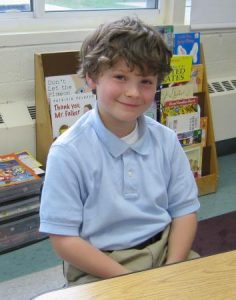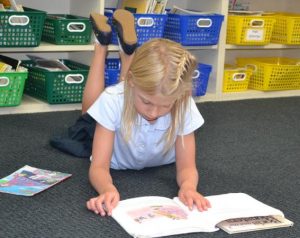 Our Philosophy
Our Philosophy
Our mission in second grade is to give our students a desire to learn. We strive to create a loving and inviting atmosphere where the children can learn to express themselves in all they do. We create a safe environment to enhance each child’s spiritual, physical, emotional, and academic growth. We also hope to inspire and motivate the children to believe in themselves and strive to do the best they can with each life experience.
Second-Grade Curriculum
St. Francis offers a strong and varied academic curriculum for second grade students.
Religion
Our students prepare for two sacraments. A strong formation of faith develops with the Sacrament of Reconciliation. We continue to build that faith as the children prepare to receive Jesus in their First Holy Communion. We focus on being a child of God and living a spiritual life. We teach the parts of Mass so we can participate in our all-school masses appropriately. Our curriculum includes the Sophia Press – Spirit of Truth.
Reading
Second grade classrooms will use the CR Success Reading Program. Much focus is placed on reading in second grade. Our classes are assessed multiple times throughout the year to guide our instruction and to provide differentiated lessons. Students are exposed to many different forms of literature and our classroom libraries have a variety of genres. Second graders are given the opportunity to work independently, with partners and in small and large group settings to help build strong reading habits. Second graders are encouraged to read, read and read some more!
Phonics and Spelling
Using the CR Success Wordsmith program, our spelling units are based on phonics skills that are learned throughout the year. These skills are used daily in reading and writing. We focus on beginning and ending consonant sounds, short and long vowels and vowel patterns, consonant blends, digraphs and word endings.
Writing/Grammar
Within our language arts curriculum, the children are given many opportunities to write. They learn the steps of the writing process. We incorporate lessons in grammar to help build sentence structure competency and facilitate the flow of students’ writing. We learn to use more descriptive words and complex ideas. Some topics include opinion writing, poetry, narratives, and journal writing.
Handwriting
While using the Zaner-Bloser Handwriting program, correct manuscript is the major focus of mastery. Second graders are also introduced to cursive writing later in the year.
Math
Our curriculum from Sadlier Math covers many areas throughout the year. We continue to build the children’s knowledge of basic addition and subtraction with regrouping two and three digit numbers. Money, time, measurement, geometry, and probability are also taught within the year. Hands-on activities are essential tools used in the development and mastery of these skills.
Science
Knowledge in life science, earth science and engineering is developed throughout the year through experiments and activities. We use a program called Mystery Science and have science kits full of supplies to help guide the concepts. Participation in the Science Fair gives students the opportunity to use the scientific method.
Social Studies
Students participate in a wide variety of activities to stimulate their knowledge of economics, geography and citizenship. They learn how communities worked in earlier civilizations and how they work today.
 Enrichment
Enrichment
Spanish
Second grade continues to build vocabulary skills, learning numbers from 0 to 20, the uses of the familiar and formal “You” and recognizing the letter sounds of the Spanish alphabet. Students are able to introduce themselves and are starting to develop writing skills distinguishing between singular and plural nouns by applying Spanish grammatical rules. They also start writing their first sentences in Spanish expressing likes with action words. Students also learn about the Hispanic culture and Catholic faith with short prayers, songs and traditions.
Specials
Each week our second graders take part in art, music, physical education, computer and library classes. They also benefit from additional enrichment in the form of special assemblies and programs, which vary from year to year.
Recess/Lunch
Every day, second graders enjoy a 25 minute lunch period followed by 25 minutes of outdoor recess time. Recess and lunch are supervised by parent helpers.